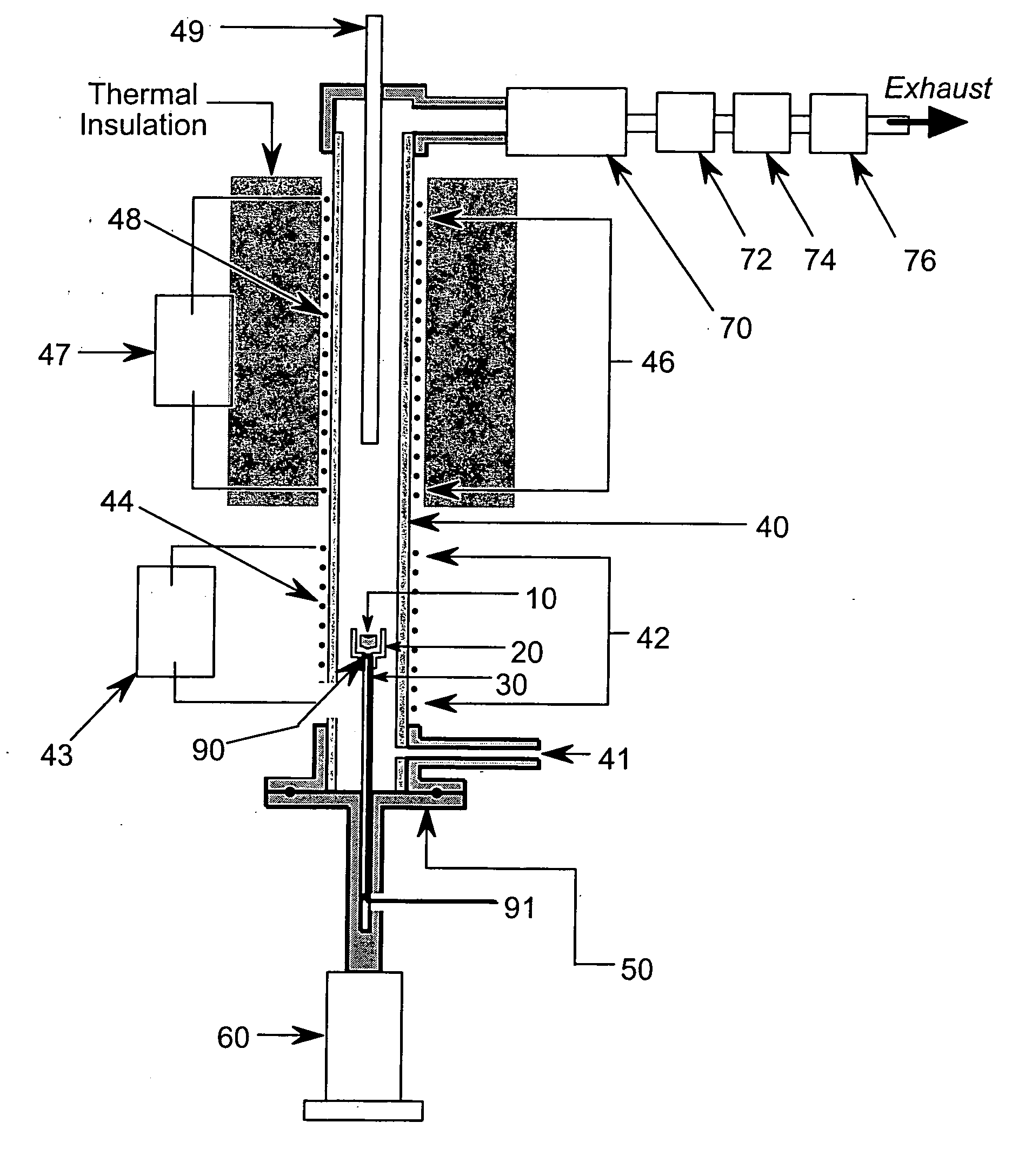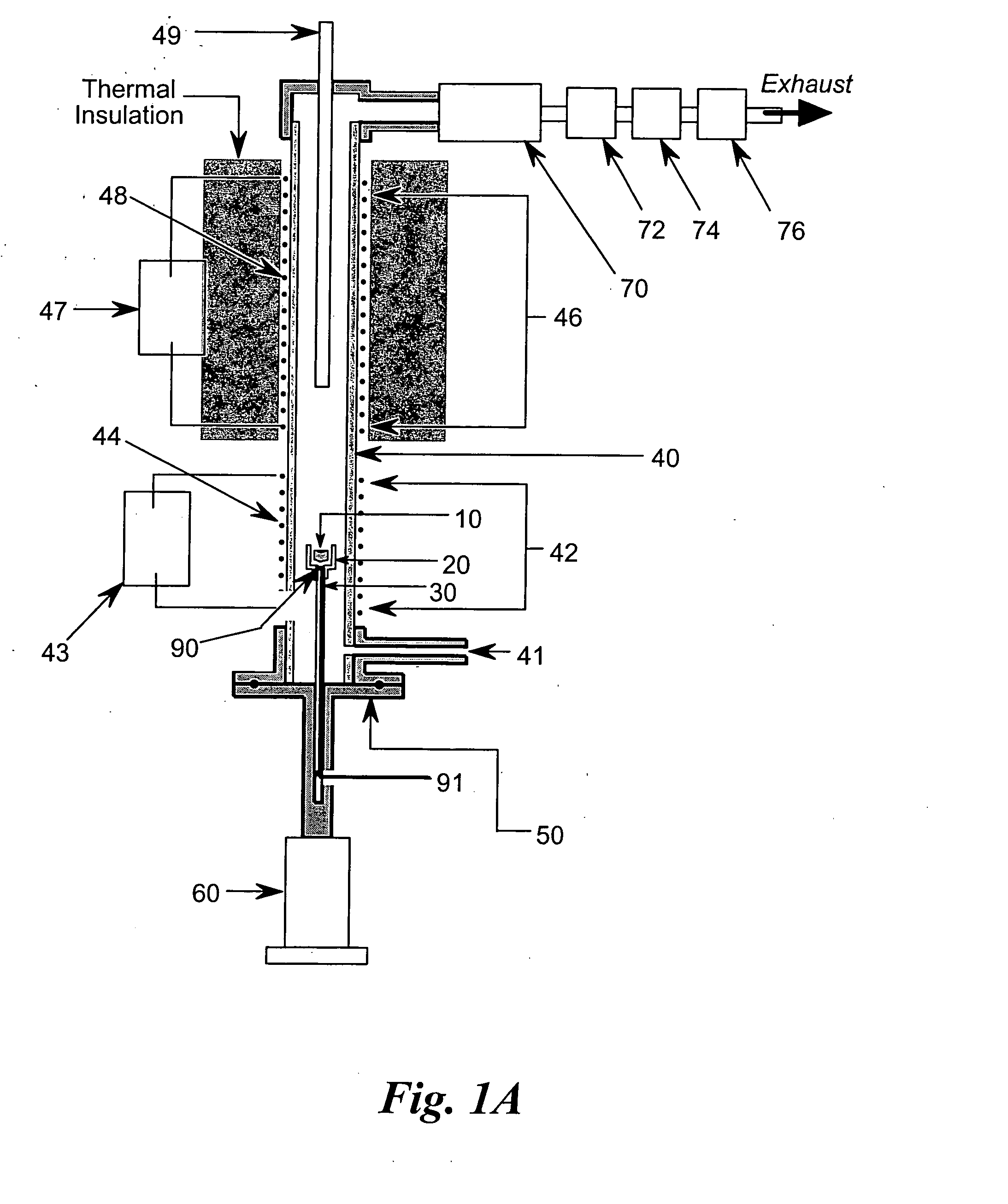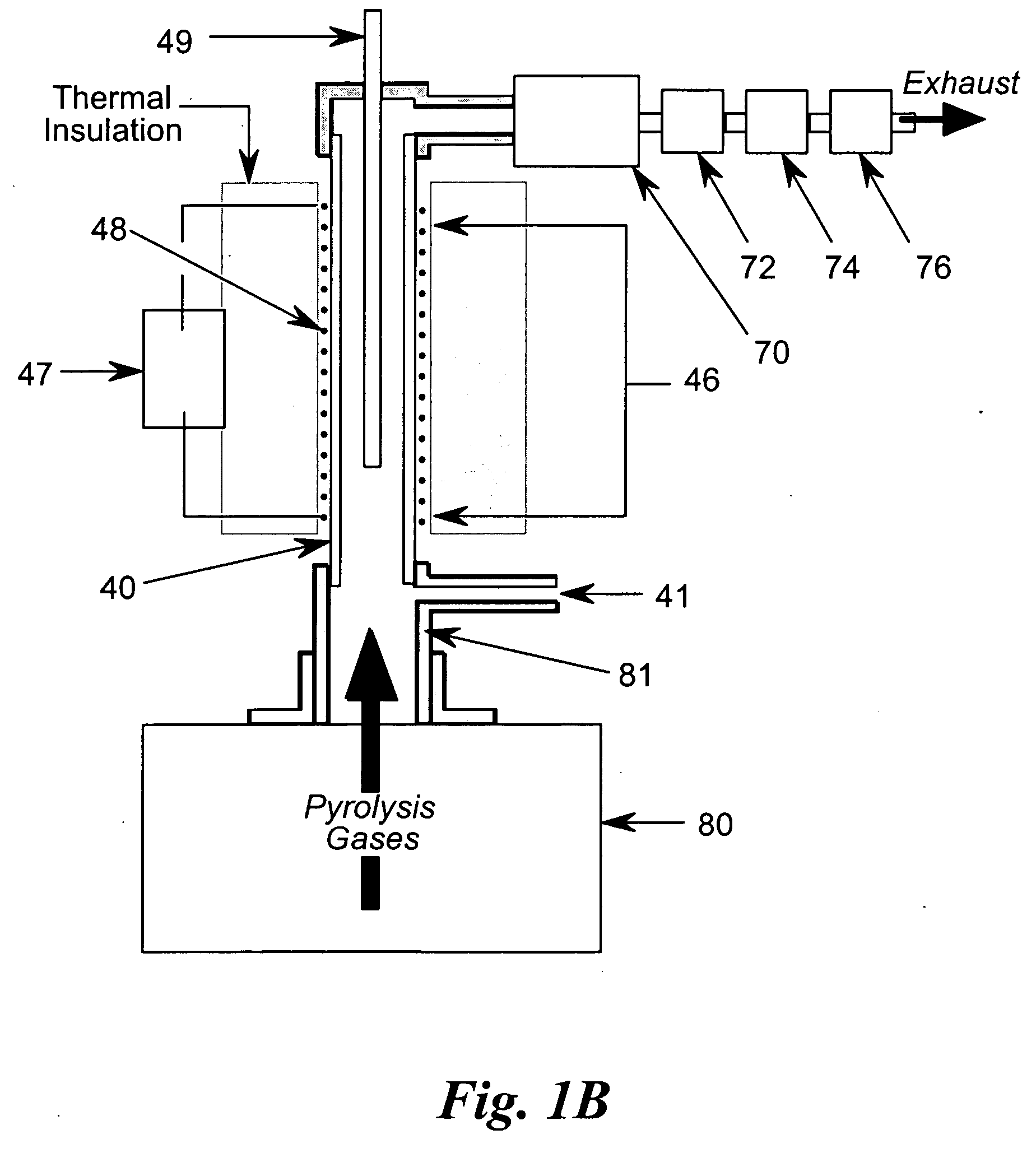Flammability tester
a technology of flammability tester and flammability temperature, which is applied in the field of flammability tester, can solve the problems of poor mass transfer, relatively inefficient conversion of fuel gas, and obtained sample ignition temperature, and achieve the effects of quick and accurate measurement, and quick and accurate measuremen
- Summary
- Abstract
- Description
- Claims
- Application Information
AI Technical Summary
Benefits of technology
Problems solved by technology
Method used
Image
Examples
Embodiment Construction
[0038] In the flammability tester of FIG. 1A, the test sample 10 is placed in sample cup 20 located at the top of sample mounting post 30 inserted into ceramic tube 40 using flange and sample mounting post assembly 50 attached to actuator 60. While the present embodiment uses a nonporous ceramic tube with an internal diameter of approximately one centimeter, other suitable high-temperature capable and corrosion resistant materials, such as Inconel™, Monel™, etc., and other convenient diameters would also suffice. The lower section of ceramic tube 40 constitutes the pyrolysis chamber, or pyrolyzer 42 of the tester, while the upper section of ceramic tube 40 constitutes the combustion chamber, or combustor 46 of the tester. In the present embodiment, the combustor 46 is approximately eight inches (20 cm) long. Sample actuator 60 positions sample 10 into ceramic tube 40 by sliding sample cup 20 on mounting post 30 upward into ceramic tube 40 until flange and sample mounting post assemb...
PUM
 Login to View More
Login to View More Abstract
Description
Claims
Application Information
 Login to View More
Login to View More - R&D
- Intellectual Property
- Life Sciences
- Materials
- Tech Scout
- Unparalleled Data Quality
- Higher Quality Content
- 60% Fewer Hallucinations
Browse by: Latest US Patents, China's latest patents, Technical Efficacy Thesaurus, Application Domain, Technology Topic, Popular Technical Reports.
© 2025 PatSnap. All rights reserved.Legal|Privacy policy|Modern Slavery Act Transparency Statement|Sitemap|About US| Contact US: help@patsnap.com



